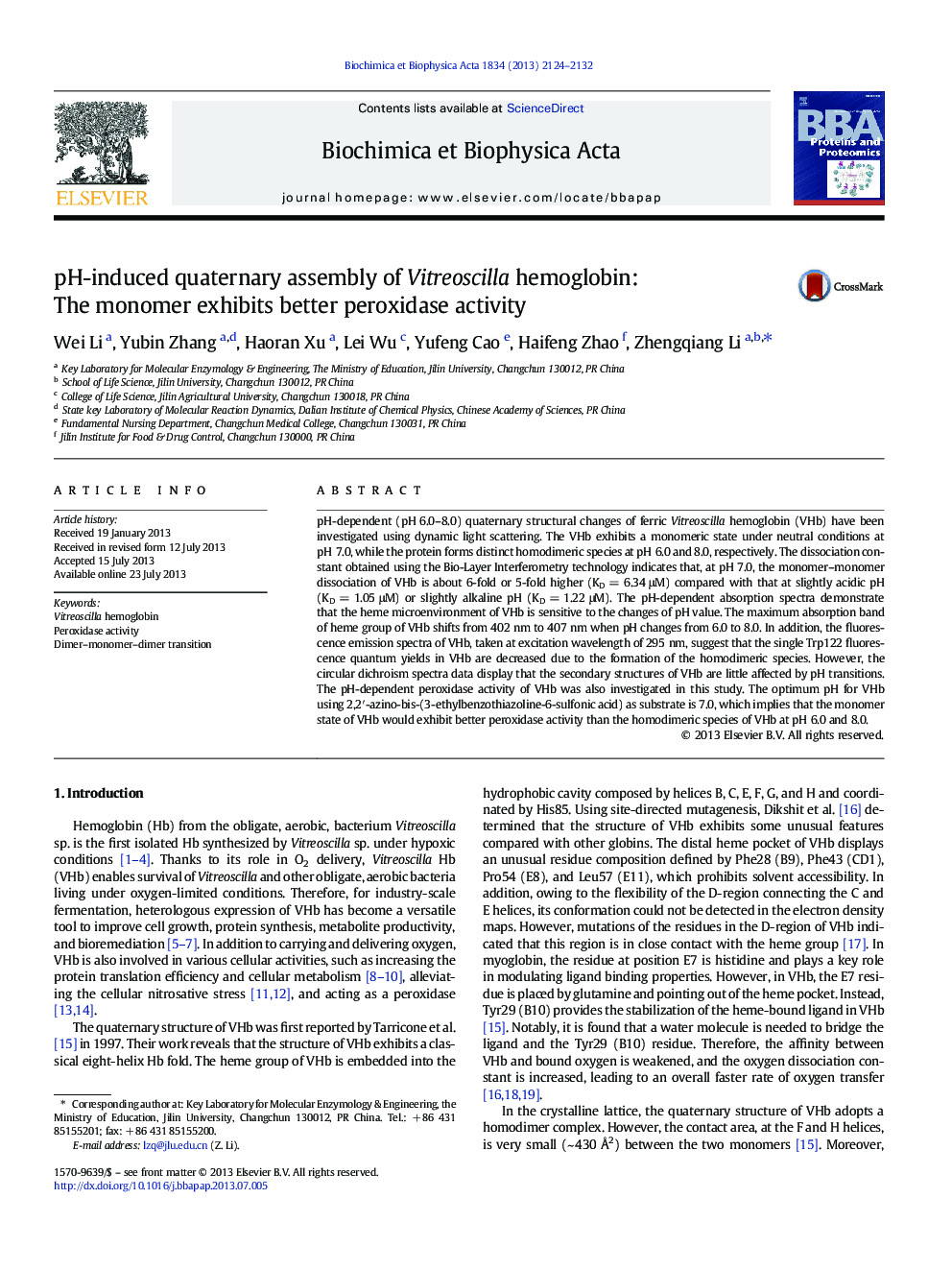| Article ID | Journal | Published Year | Pages | File Type |
|---|---|---|---|---|
| 10537242 | Biochimica et Biophysica Acta (BBA) - Proteins and Proteomics | 2013 | 9 Pages |
Abstract
pH-dependent (pH 6.0-8.0) quaternary structural changes of ferric Vitreoscilla hemoglobin (VHb) have been investigated using dynamic light scattering. The VHb exhibits a monomeric state under neutral conditions at pH 7.0, while the protein forms distinct homodimeric species at pH 6.0 and 8.0, respectively. The dissociation constant obtained using the Bio-Layer Interferometry technology indicates that, at pH 7.0, the monomer-monomer dissociation of VHb is about 6-fold or 5-fold higher (KD = 6.34 μM) compared with that at slightly acidic pH (KD = 1.05 μM) or slightly alkaline pH (KD = 1.22 μM). The pH-dependent absorption spectra demonstrate that the heme microenvironment of VHb is sensitive to the changes of pH value. The maximum absorption band of heme group of VHb shifts from 402 nm to 407 nm when pH changes from 6.0 to 8.0. In addition, the fluorescence emission spectra of VHb, taken at excitation wavelength of 295 nm, suggest that the single Trp122 fluorescence quantum yields in VHb are decreased due to the formation of the homodimeric species. However, the circular dichroism spectra data display that the secondary structures of VHb are little affected by pH transitions. The pH-dependent peroxidase activity of VHb was also investigated in this study. The optimum pH for VHb using 2,2â²-azino-bis-(3-ethylbenzothiazoline-6-sulfonic acid) as substrate is 7.0, which implies that the monomer state of VHb would exhibit better peroxidase activity than the homodimeric species of VHb at pH 6.0 and 8.0.
Related Topics
Physical Sciences and Engineering
Chemistry
Analytical Chemistry
Authors
Wei Li, Yubin Zhang, Haoran Xu, Lei Wu, Yufeng Cao, Haifeng Zhao, Zhengqiang Li,
